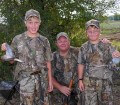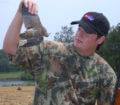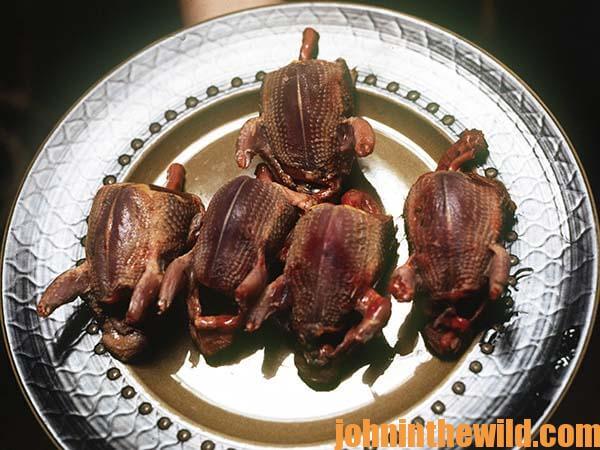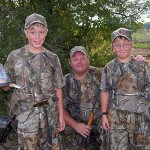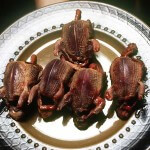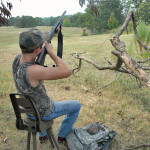John’s Note: The winged warriors from hell, also known as mourning doves, streak across the fall sky like World War II Kamikaze pilots. Their ability to dive, pitch and roll will challenge the skills of even the best wing shooters. Southerners especially enjoy the tradition of dove hunting which opens soon in many states, and probably like it as much as eating black-eyed peas, speckled butter beans, a pone of cornbread and a glass of buttermilk. But just because you go out and sweat in the hot sun of early fall, get bitten by redbugs in the grass and punctured by industrial strength mosquitoes, you still may not take home a mess of doves. Here’s how Jim Porter, a shooting instructor at Mississippi State University recommends you shoot specific doves.
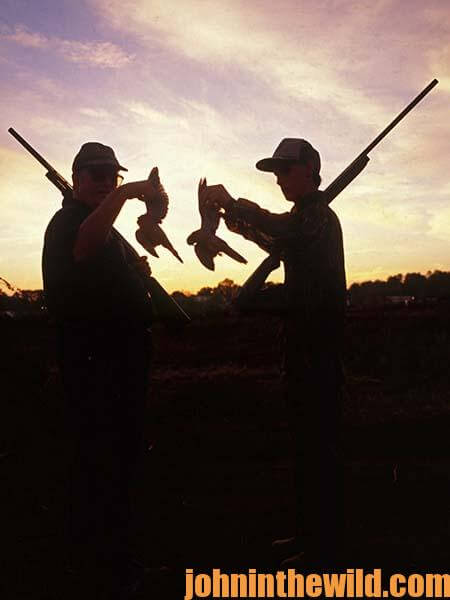 * Bird Flying At You – “If the bird flies toward you, bring the barrel of your gun from behind the bird and past a little bit to get the speed of your gun consistent with the bird’s speed,” Porter advises. “Then black the bird out with the barrel, and squeeze the trigger. Since you’ve placed the shot in front of the bird, it will fly into the shot pattern.”
* Bird Flying At You – “If the bird flies toward you, bring the barrel of your gun from behind the bird and past a little bit to get the speed of your gun consistent with the bird’s speed,” Porter advises. “Then black the bird out with the barrel, and squeeze the trigger. Since you’ve placed the shot in front of the bird, it will fly into the shot pattern.”
* Bird Flying Away From You – “Put the bead on this bird to get the speed consistent with the dove and shoot a little under the bird,” Porter suggests. “Shooting under the dove in this situation equates to leading the bird.”
* Shooting A Double – “Unless you hunt in a clean field, when you down the first bird and then swing at the second one, you’ll lose a little perspective of where the first bird has hit the ground,” Porter mentions. “So, shoot at the bird closest to you first. If that dove folds, swing off on the second bird, track it, get in front of it, and shoot again.”
On opening day of a new season, baseball players don’t go to home plate and take their first swings. If they do, most often they’ll strike out and rarely will they hit home runs.
their first swings. If they do, most often they’ll strike out and rarely will they hit home runs.
To take more doves, go to a sporting clays range, and take some shooting instruction before the season opens. Regardless of how well you shoot, an hour or two of instruction can help you tune up for opening day.
“The most common mistakes that a dove hunter makes is in his or her basic form,” says Matthew Pitman of Tuskegee, Alabama, a Level Two instructor for the National Sporting Clays Association. “We often see hunters bring their heads down to their guns instead of bringing the guns to their faces. Another common mistake happens when hunters try to aim instead of point their guns. Often a hunter will try and shoot too quickly because he believes that if he doesn’t take a shot as soon as he sees the bird he’ll be less likely to take a bird because he’s let that the bird get further away from him. However, if a hunter assumes the proper shooting form, he’ll often bag more birds by shooting slower rather than by shooting faster.”
After you know that you can shoot accurately and with the proper form, spend one or two days on the sporting-clays range sharpening-up your shooting skills before you head-out to the dove field. If you don’t, you’ll have less chance of success hunting doves than a major-league batter who goes to bat in the season opener without practicing first will.
To get the Kindle e-cookbook “The Best Wild Game & Seafood Cookbook Ever: 350 Southern Recipes for Deer, Turkey, Fish, Seafood, Small Game and Birds” by John and Denise Phillips, click here.
About the Author
John Phillips, winner of the 2012 Homer Circle Fishing Award for outstanding fishing writer by the American Sportfishing Association (AMA) and the Professional Outdoor Media Association (POMA), the 2008 Crossbow Communicator of the year and the 2007 Legendary Communicator chosen for induction into the National Fresh Water Hall of Fame, is a freelance writer (over 6,000 magazine articles for about 100 magazines and several thousand newspaper columns published), magazine editor, photographer for print media as well as industry catalogues (over 25,000 photos published), lecturer, outdoor consultant, marketing consultant, book author and daily internet content provider with an overview of the outdoors.

